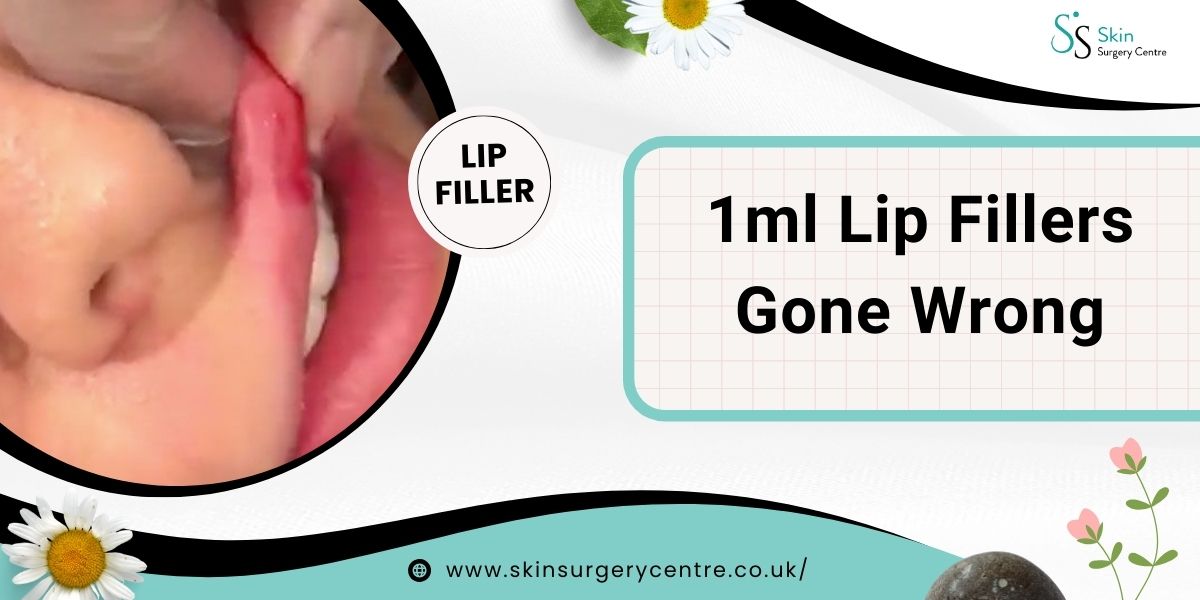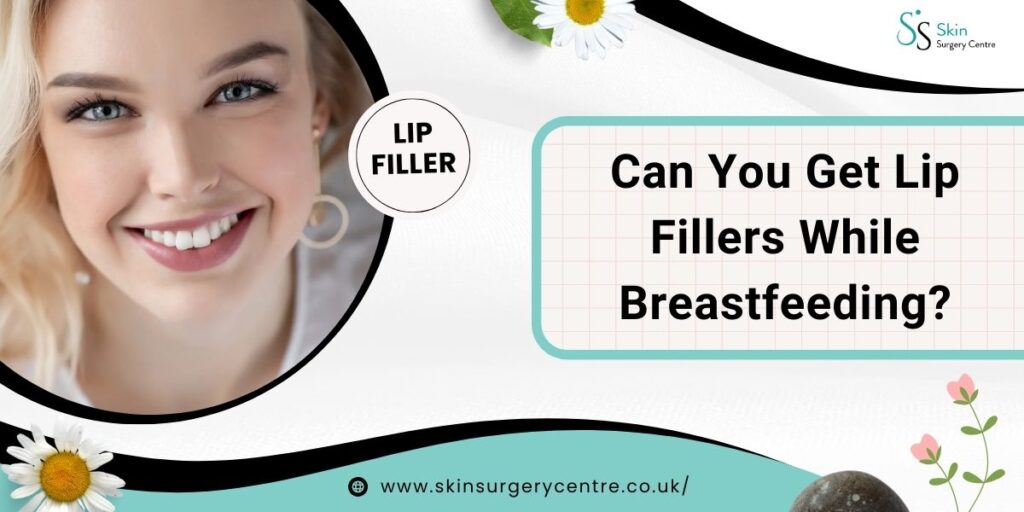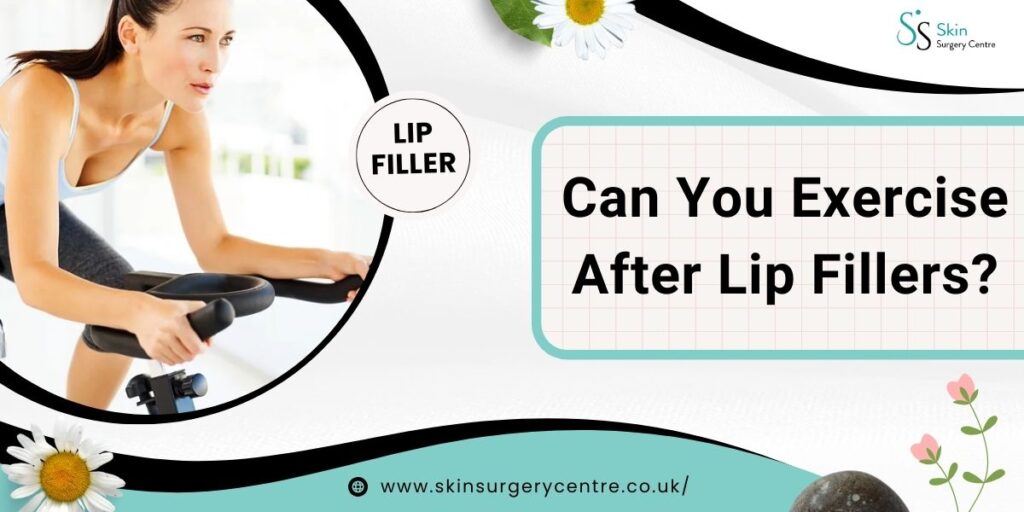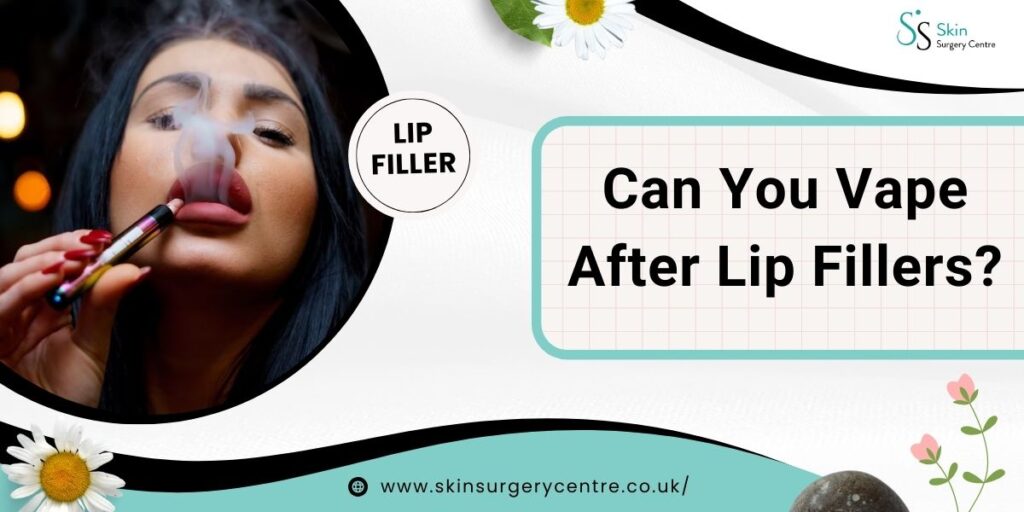Can You Get Lip Fillers While Breastfeeding? UK Expert Answers
Many new mums wonder: Can you get lip fillers while breastfeeding? It’s a common question in UK clinics, and this...

1ml Lip Fillers Gone Wrong: Since they seamlessly enhance one’s features, lip fillers have become a solution of choice, especially for patients who wish to achieve a shapelier and fuller look. Most patients seeking aesthetic enhancement are not aware that the standard procedure of injecting 1ml lip filler is more complex than it seems.
Like all medical procedures, lip fillers carry potential risks, from minor swelling to rare but serious complications. From subpar results to major medical issues, every potential consequence needs special consideration and proper understanding.
Should you decide to proceed with lip fillers or have already gotten on the aesthetics bandwagon, this guide should help you wrap your head around the most common risks and complications, and what measures you can take to make sure your lips are still gorgeous, even after the procedure.
Lip fillers refer to injectable materials almost exclusively made from hyaluronic acid (HA), which is a naturally produced component within the body that has an impact on hydration, skin elasticity, and skin health. HA fillers are proven safe in multiple dermatology studies (Dermatologic Surgery, 2020). Hyaluronic Acid is found in specialised forms in Juvederm, Restylane and Belotero and are designed for lip fillers by top brands.
These fillers are widely chosen because they deliver natural-looking results when performed correctly. However, with mismanagement, many issues may arise after using these fillers. With proper planning and understanding, we can help you mitigate undesired outcomes during recovery while maximising on desired results.
Also Read: What Is Lip Filler?
Along with the patient’s personal goals, each person’s anatomy is different. For this reason, 1ml is deemed a suitable starting point because it is enough to increase plumpness, while not making the patient feel overfilled. In 2024, 60% of UK patients starting lip fillers chose 1ml as their first treatment volume. Still, in areas as sensitive as the cupid’s bow, assuming a small amount will work easily leads to some disastrous results. This low dose can be detrimental if it is not approached with caution.
Although lip fillers can enhance a person’s features, failure to do them properly can be dangerous too. The use of lip fillers can be dangerous because of its associated risks that can be injurious or even life threatening.
With the injection, there will always be some level of insertion mark swelling, bruising, or tenderness. For instance: These should ease over time but could still hinder you from your normal self for a few days. If you have plans for a big event around the corner or on a specific day, it is best to schedule your treatment in a way that gives you ample time to recover.
Although rare, the delayed reactions can be worrisome. They occur weeks, months, or even years after the procedure. Possible delayed reactions include:
This is a chronic inflammatory reaction to the filler material that occurs in approximately 0.4% to 0.6% of cases. It can cause the formation of painful hard lumps beneath the skin.
Although this occurs in only 0.3% of cases, it is a severe immune reaction that can cause massive swelling, which in some instances can block airways. It requires emergency medical attention and treatment with corticosteroids.
Lipogranulomas and abscesses are delayed issues, as well as pain or discolouration known as melanosis. These adverse effects, while rare, shed light on the necessity of competent professional help and follow-up care.
Even with the use of only 1ml of HA filler, overfilling remains a risk. The focus of some practitioners is so narrowed to specific sections (for example, the central portion of the lips) that the outcome is an unappealing, “duck lips” look. Also, improper placement leads to asymmetry, uneven shaping, or puffiness beyond the borders of the lips.
Resolving these problems is not as easy as doing a quick fix. You may need painful hyaluronidase injection to dissolve the filler, which can be painful and leave bruises for some time.
With the right strategies before and after your lip procedure, you can manage your risks and achieve an optimal result.
Avoid anticoagulants: Alcohol, aspirin, fish oil, and certain supplements like vitamin E should be avoided for a week before your procedure to reduce the risk of bruising.
Send “wish pictures”: Show your injector reference pictures that help explain what look you wish to achieve. Not all lips go with every style, therefore, they may not be suitable.
Follow through: Swelling may be reduced through cold compresses, and remaining upright for a few hours mitigates the chance of the filler being displaced.
Give it time: The results for volume change will be noticeable instantaneously; the change in the final aesthetic may take several weeks in comparison.
Delayed responses are not uncommon. Make sure to follow up regularly and keep an eye out for negative effects that may need addressing.
The good thing is many issues are addressable. This makes it vital that your procedure is done by a qualified professional, since many people fail to detect issues early.
Less common dangers include nodules, bumps and other infections when fillers are placed incorrectly or in unclean environments. Maintaining normal hygiene standards with clean instruments helps reduce the incidence of complications.
The most important decision is choosing a medically qualified injector registered with the GMC or NMC. Having someone experienced in facial aesthetics who has a background in medicine, dermatology, or plastic surgery is ideal. Always check if your injector is listed on the GMC Medical Register or NMC Register.
Injectable fillers should never be considered as an additional service because they require a trained eye for detail, a huge understanding of facial anatomy, and most importantly, years of experience.
Yes, a social media account with aesthetic surgeries done on their patients may seem appealing, but don’t let that be the only reason for making a decision. Try to find client reviews, check their training certifications, and their before-and-after pictures.
When done well, 1ml fillers can look beautiful. However, there are many factors that determine how they will work out such as face shape, lip structure, or other personal preferences. Furthermore, these particulars may cause individuals to prefer either lower or higher volumes.
If this is something that you are considering, don’t make a rush decision based off of FOMO or because it seems trendy. We suggest taking time to evaluate this decision, especially when factoring the results of the procedure and how it impacts the overall balance of your face.
Achieving beautiful lips with 1 mL lip fillers is quite enticing, and if done thoughtfully, can have stunning outcomes. Even so, most problems stem from a practitioner’s inexperience or missing crucial safety precautions.
Important Notes:
Lips can be the most stunning part on a person’s face; therefore, search for the best practitioner for your lips.
Make sure the professional you are working with is constantly available for follow-up and walks you through the provided risks and offers clear explanations.
Educate yourself on the potential risks and aftercare procedures so that you can better prepare yourself prior to the surgery.
When approached with care and expertise, 1ml lip fillers can enhance your lips beautifully while keeping your safety the top priority.
Yes. While 1ml represents a conservative starting volume, outcomes may still compromise aesthetics or safety if delivery technique, product quality, or volume accuracy are suboptimal. If fillers are placed too deeply or unevenly, this can cause lumps, asymmetry, or an unnatural look. Thus, the selection of an injector possessing both GMC or NMC accreditation and demonstrable facial aesthetics experience remains non-negotiable.
Temporary swelling, bruising, or tenderness around the lips usually lasts 3–5 days. More infrequent yet clinically significant events may include vascular compromise, hypothesized delayed hypersensitivity, or microbial colonization, each of which correlates with procedural execution and environmental sterility.
Yes. Fillers composed of hyaluronic acid are subject to enzymatic removal through Hyaluronidase, a naturally occurring mucolytic enzyme. This enzyme breaks down the filler safely, restoring your natural lip shape within hours to days.
Primarily, engage an injector whose qualifications include formal medical licensure and independent aesthetic training. Additionally, abstain from ethanol-containing beverages and systemic anticoagulants for seven days prior to intervention and adhere rigorously to clinician-prescribed postoperative care.
Generally speaking, it will. One millilitre is calibrated to increase lip fullness modestly, ensuring that the change harmonises with the proportions of your face. In individuals with particularly slender lips, 1ml frequently serves as the ideal introductory volume, yielding a satisfying yet understated result.




Many new mums wonder: Can you get lip fillers while breastfeeding? It’s a common question in UK clinics, and this...
If you’ve had lip fillers or are planning them, you may wonder: Can I put lip balm on after lip...
Can you exercise after lip fillers? At our London, Manchester, and Birmingham clinics, this is one of the most common...
Can you vape after lip fillers? It’s one of the most common questions we hear at our London, Manchester, and...
As one of the most sought-after procedures in cosmetic enhancement, lip fillers help people restore volume and definition to their...